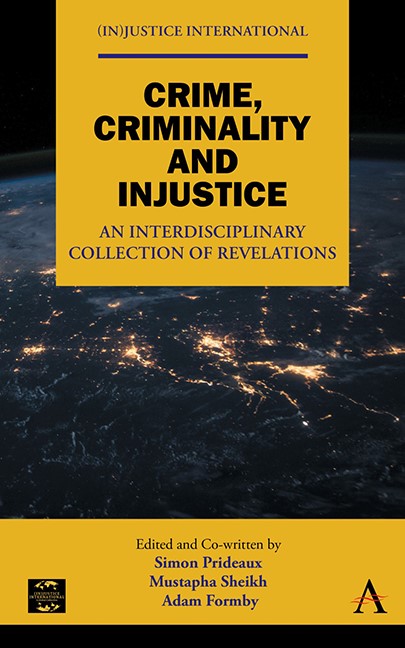Book contents
- Frontmatter
- Dedication
- Contents
- Acknowledgements
- List of Editors and Contributors
- Editor’s Introduction to the Book
- Part One Incarceration, Cultural Destruction and Ecocide: The Alienation of Ethnic Minorities, Nature and Indigenous Peoples
- Part Two The Impoverishment, Exclusion and Maltreatment of the Working Poor
- Part Three Disability, Poverty and Neglect
- Part Four Youth, Gender, Migration and Human Trafficking
- Concluding Remarks
- Index
Chapter Twelve - Deaths and Social Harm: The Trajectories of Pregnant Refugees Attempting to Cross the Mediterranean in Search for Europe
Published online by Cambridge University Press: 14 November 2023
- Frontmatter
- Dedication
- Contents
- Acknowledgements
- List of Editors and Contributors
- Editor’s Introduction to the Book
- Part One Incarceration, Cultural Destruction and Ecocide: The Alienation of Ethnic Minorities, Nature and Indigenous Peoples
- Part Two The Impoverishment, Exclusion and Maltreatment of the Working Poor
- Part Three Disability, Poverty and Neglect
- Part Four Youth, Gender, Migration and Human Trafficking
- Concluding Remarks
- Index
Summary
Introduction
The Mediterranean Sea has been deadly for more than 20,000 refugees and migrants since 2014 (International Organization for Migration 2022). Some experts estimate that the real numbers could be much higher. And of the people who try to cross, reports from UN agencies and non-governmental organisations indicate that pregnant women and children are frequently attempting the perilous crossing. Indeed, the crossing can be particularly dangerous for pregnant women who can experience health complications resulting from the violence they may have encountered along the way, but also due to the lack of appropriate healthcare and inhumane conditions they have had to suffer before and during the crossing. These may include sitting on unseaworthy wooden boats or inflatable dinghies – while crossing the sea in bad weather conditions – which may lead to anxiety and panic attacks, dehydration, sunburn, nausea, physical injuries, bone fractures and even death (Cincurova 2020, 2021a, 2021c).
By way of an elaboration, this chapter will expose the trajectories of pregnant migrant women who attempted to cross the Mediterranean Sea and explore the problems surrounding data collection on the trajectories of pregnant women in the Mediterranean as a whole. It is important to note that the Mediterranean Sea provides three main migration routes into Europe: the so-called ‘Central’ Mediterranean route that travels from the northern coast of Africa to Italy and Malta, the ‘Western’ route from North Africa to Spain or the Canary Islands and the Eastern route from Turkey to Greece. (Cincurova 2020). These routes can overlap for some migrants and the frequency rates change over time. However, the central Mediterranean route remains the most frequented throughout 2020 and 2021 (as of June 2021). The chapter will also explore available testimonies from pregnant women who survived the crossing and look at the possible health and psychosocial consequences for these women and their children that may have occurred during their dangerous and unsafe journeys. In addition, the chapter sheds light on the lack of appropriate care provided to these women by European authorities and the general neglect and lack of consideration for refugees crossing the Mediterranean on the part of the European Union.
- Type
- Chapter
- Information
- Crime, Criminality and InjusticeAn Interdisciplinary Collection of Revelations, pp. 197 - 210Publisher: Anthem PressPrint publication year: 2023

